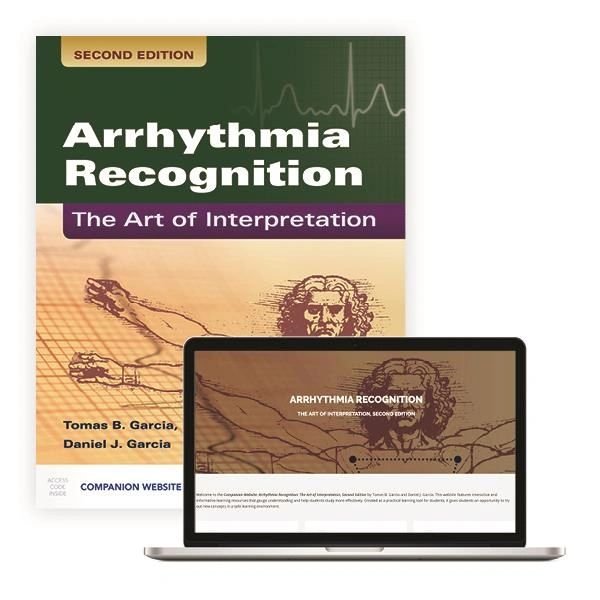 Image 1 of 1
Image 1 of 1


Arrhythmia Recognition: The Art of Interpretation, 2nd Edition
Arrhythmia Recognition: The Art of Interpretation, Second Edition teaches students of all levels – including nurses, physician assistants, cardiovascular technicians, allied health professionals, paramedics, medical students, and physicians – how to interpret a rhythm strip using foundational concepts and a step-by-step approach. Presented in an unintimidating, conversational writing style, Arrhythmia Recognition: The Art of Interpretation facilitates understanding of this complex subject. This text is appropriate for anyone who wishes to learn how to accurately interpret arrhythmias. Students gain a solid understanding of electrophysiology and pathophysiologic mechanisms in the heart, and learn how to apply this knowledge to the rhythm strip. The Second Edition is also an excellent reference text for instructors who wish to expand their knowledge of arrhythmia interpretation.
This edition includes full coverage of wide-complex tachycardias in four chapters: the basics, the criteria, the approach, and a chapter on synthesis/interpretation, presented in a case study format. Beginner's Perspective boxes written by someone new to arrhythmia recognition provide tips and insight on how to approach the material as a beginner. This edition also includes chapter objectives written to Bloom's taxonomy.
Digital Learning tools are included at a Companion Website included with the purchase of each new print copy of Arrhythmia Recognition: The Art of Interpretation, Second Edition. An access code to the website provides to a wealth of information to help students gauge understanding and study more effectively, including animations, high-yield chapters, key term flashcards, and learning objectives.
Daniel J. Garcia, MD; Tomas B. Garcia, MD, ISBN:9781449642334 | © 2020 | 854 pages
Arrhythmia Recognition: The Art of Interpretation, Second Edition teaches students of all levels – including nurses, physician assistants, cardiovascular technicians, allied health professionals, paramedics, medical students, and physicians – how to interpret a rhythm strip using foundational concepts and a step-by-step approach. Presented in an unintimidating, conversational writing style, Arrhythmia Recognition: The Art of Interpretation facilitates understanding of this complex subject. This text is appropriate for anyone who wishes to learn how to accurately interpret arrhythmias. Students gain a solid understanding of electrophysiology and pathophysiologic mechanisms in the heart, and learn how to apply this knowledge to the rhythm strip. The Second Edition is also an excellent reference text for instructors who wish to expand their knowledge of arrhythmia interpretation.
This edition includes full coverage of wide-complex tachycardias in four chapters: the basics, the criteria, the approach, and a chapter on synthesis/interpretation, presented in a case study format. Beginner's Perspective boxes written by someone new to arrhythmia recognition provide tips and insight on how to approach the material as a beginner. This edition also includes chapter objectives written to Bloom's taxonomy.
Digital Learning tools are included at a Companion Website included with the purchase of each new print copy of Arrhythmia Recognition: The Art of Interpretation, Second Edition. An access code to the website provides to a wealth of information to help students gauge understanding and study more effectively, including animations, high-yield chapters, key term flashcards, and learning objectives.

